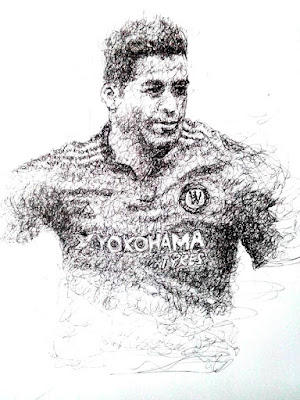Abstract Canvas Art
Many people try to understand abstract art and walk away frustrated at the attempt. It will help to understand something about the history of abstract canvas art and how it first began, thus gaining a perspective of its philosophical and cultural origins. Abstract art has also been referred to as non-objective art.
Beginning at the time of the Post Impressionists, Gauguin and Van Gogh and other painters were endeavoring to put their inner world, as well as nature, on canvas. Since the time of the Renaissance, artist had expressed visible reality and linear perspective in painting. With the advance of technology and changes in science and philosophical views, at the end of the 19th century artists were now seeking a new way to express these changes in their art.
An early reaction to the Impressionists art movement was Expressionism, the bold use of painting in distorted imagery with intense color and often shocking forms of known objects. Examples of this art can be found in the paintings of Edvard Munch in "The Scream" painted in 1893 or in the art of James Ensor. Although a mostly German movement in the beginning, some artists influenced by Expressionism were Van Gogh, Oscar Koskoschka, Mark Chagall, Henri Matisse and Pablo Picasso. Also in the late 19th century, Mysticism and the beginnings of modern religious thought had a profound influence on painters who later turned to abstracting images.
At the beginning of the 20th century and with the advent of World War I, artists were beginning to express emotions and the violence around them. The language of painting began using lines that were exaggerated, colors that were violent and forms that were distorted and thus the beginnings of abstract canvas art. George Braques began painting images that were faceted in order to paint the essence of an object. Picasso also joined in geometric shaping, and Piet Mondrian painted almost pure abstraction using line and geometric shapes. Leger, Kandinsky, Chagall and others added emotion to create abstracted work that was only partially based on reality, and the abstracted image became the source of art. Later, Picasso went somewhat further in abstracting with shapes and line and paintings such as "Guernica" contained an abstracted world of violence and chaos in war ravaged Europe.
Abstract canvas art, after World War II, was further popularized through the Abstract Expressionists. Artists such as Jackson Pollack went beyond just expressing emotion through images, by painting freely without control, as evidenced in his splatter paintings. Art started to express the spiritual as well, and artists began to paint color relationships and movement and depth, as the act of painting in itself became the theme of Pollack and Franz Kline. Mark Rothko began as a Surrealist and later painted compositions of squares in color relationships. In the late 20th and early 21st centuries, color, lyrical movement, the transcendental and the timeless have been ongoing themes in abstract canvas art. Line, shape, color, and brush stroke define abstract art and make it the pleasure or pain of the viewer to interpret.
Article Source: http://EzineArticles.com/6323470

